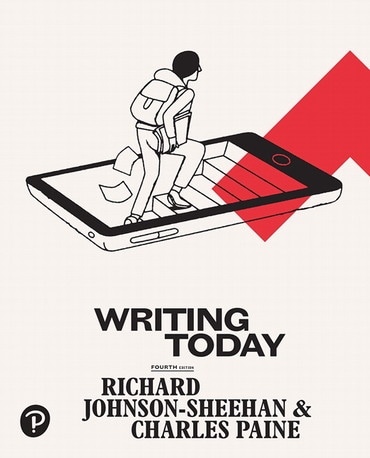
Writing Today, 4th edition
Published by Pearson (January 2, 2018) © 2019
- Richard Johnson-Sheehan Purdue University
- Charles Paine University of New Mexico
Title overview
Writing Today provides you with practical writing skills for composing in the real world. This is an accessible text created with today's students in mind. It's chunked writing style, eye-catching design and focus on writing genres, strategies, and processes sets you up for success. You'll gain knowledge you can utilize in your college courses, your career, and your civic life.
The 4th Edition marks a turning point in this highly successful series. Authors Richard Johnson-Sheehan and Charles Paine have made reflection, or discovering why we think the way we do, one of the central concepts of the revision. As you explore this theme, you'll build your intellect, become more aware, versatile, and resilient.
